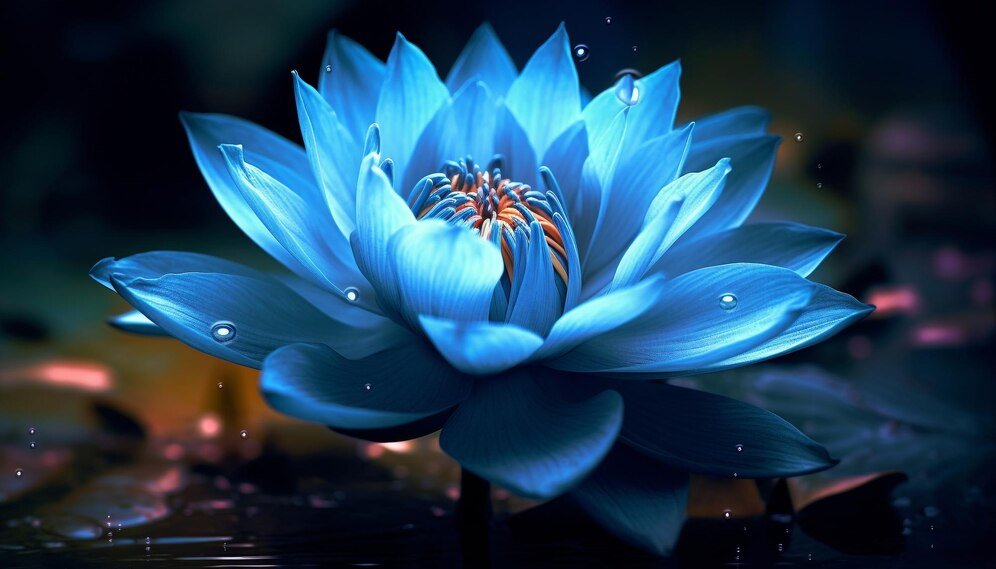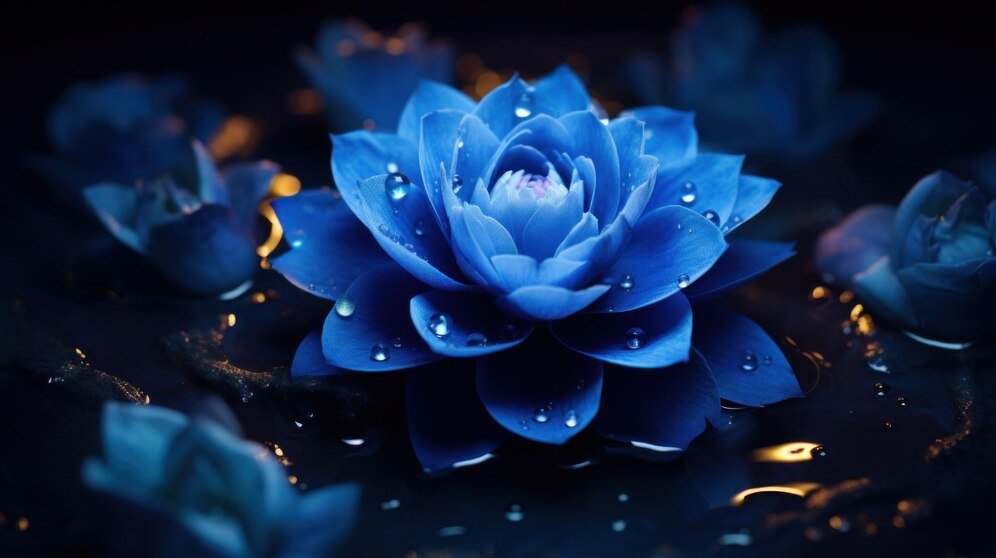Business
The Enigmatic Blue Lotus Flower: Unveiling its Mysteries 3 Great
The blue lotus flower, known for its mesmerizing beauty and mystical allure, has captivated humanity for centuries.

The blue lotus flower, known for its mesmerizing beauty and mystical allure, has captivated humanity for centuries. From ancient civilizations to modern-day enthusiasts, this enigmatic bloom continues to inspire curiosity and fascination. In this article, we will delve into the rich history, botanical characteristics, medicinal properties, and spiritual significance of the blue lotus flower.
The blue lotus flower, scientifically known as Nymphaea caerulea, is a striking aquatic plant native to various parts of Africa and Asia. It is revered for its exquisite blue petals and fragrant aroma, often found adorning the tranquil waters of lakes and rivers. Beyond its visual appeal, the blue lotus holds a profound symbolic significance, representing purity, enlightenment, and rebirth.
Historical Significance and Cultural References
Throughout history, the blue lotus flower has been intertwined with numerous mythologies, religious beliefs, and cultural practices. In ancient Egypt, it was prized for its mythical properties and was associated with the sun god Ra and the afterlife. Likewise, in Greek mythology, the blue lotus symbolized divine beauty and spiritual enlightenment.
Botanical Characteristics of the Blue Lotus Flower
The blue lotus belongs to the Nymphaeaceae family and typically grows in shallow waters with ample sunlight. Its distinctive blue petals open during the day and close at night, attracting pollinators such as bees and butterflies. The plant’s roots are anchored in the mud at the bottom of bodies of water, while its leaves float on the surface.
Medicinal and Therapeutic Uses
Ancient civilizations revered the blue lotus for its medicinal properties, utilizing various parts of the plant to treat a myriad of ailments. It was believed to alleviate pain, induce relaxation, and enhance mental clarity. In modern times, scientific research has corroborated some of these traditional claims, suggesting potential therapeutic benefits for conditions such as anxiety, insomnia, and inflammation.
Psychedelic Properties and Spiritual Significance
One of the most intriguing aspects of the blue lotus flower is its psychoactive effects, which have been documented in ancient texts and historical accounts. Consumed as a tea or smoked, the flower is said to induce mild euphoria, heightened sensory perception, and profound spiritual experiences. In religious ceremonies and meditation practices, it is revered as a tool for expanding consciousness and connecting with the divine.
Harvesting and Preparation Methods
Traditionally, the blue lotus flower was harvested by hand from natural waterways and prepared as a decoction or infusion. Today, modern cultivation techniques have made it more accessible, with dried petals and extracts readily available for purchase online. However, sustainable harvesting practices are crucial to ensure the long-term viability of this precious botanical resource.
Legal Status and Regulation
The legal status of the blue lotus flower varies significantly from country to country. While it is considered a sacred plant in some cultures and remains unregulated, it is classified as a controlled substance in others due to its psychoactive properties. As such, individuals should familiarize themselves with the laws and regulations governing its use and possession in their respective jurisdictions.
Modern Applications and Research
In recent years, there has been a resurgence of interest in the therapeutic potential of the blue lotus flower, leading to an increase in scientific research and clinical studies. Preliminary findings suggest that its bioactive compounds may have neuroprotective, anxiolytic, and anti-inflammatory effects, holding promise for the development of novel pharmaceutical treatments.
Potential Risks and Side Effects

While the blue lotus flower is generally well-tolerated when consumed in moderation, some individuals may experience adverse reactions such as dizziness, nausea, or allergic skin reactions. Additionally, excessive or prolonged use may lead to tolerance and dependence, highlighting the importance of responsible consumption practices.
Conservation Efforts
Despite its cultural and medicinal significance, the blue lotus flower faces numerous threats to its survival, including habitat loss, pollution, and overexploitation. Conservation efforts aimed at preserving its natural habitats and promoting sustainable harvesting practices are essential to safeguarding this iconic species for future generations.
Conclusion
the blue lotus flower remains a symbol of beauty, mystery, and spiritual enlightenment, captivating the hearts and minds of people around the world. Whether revered for its medicinal properties, psychedelic effects, or cultural significance, this enigmatic bloom continues to intrigue and inspire awe. As we navigate the complexities of modern life, may we cherish and protect the natural wonders that remind us of our connection to the earth and each other.
Table of Contents
-

 Business5 months ago
Business5 months agoSepatuindonesia.com | Best Online Store in Indonesia
-

 Technology3 weeks ago
Technology3 weeks agoTop High Paying Affiliate Programs
-

 Tech5 months ago
Tech5 months agoAutomating Your Window Treatments: The Advantages of Auto Blinds
-

 Tech5 months ago
Tech5 months agoUnleash Your Potential: How Mecha Headsets Improve Productivity and Focus
-

 Instagram2 years ago
Instagram2 years agoFree Instagram Follower Without Login
-

 Reviews11 months ago
Reviews11 months agoAndroid Laptop vs. Chromebook: Which one is better?
-

 Instagram2 years ago
Instagram2 years agoIGTOK – Get Instagram Followers, Likes & Comments
-

 Business8 months ago
Business8 months agoFollow These 5 Tips To Avail Personal Loans At Lower Interest Rates




















